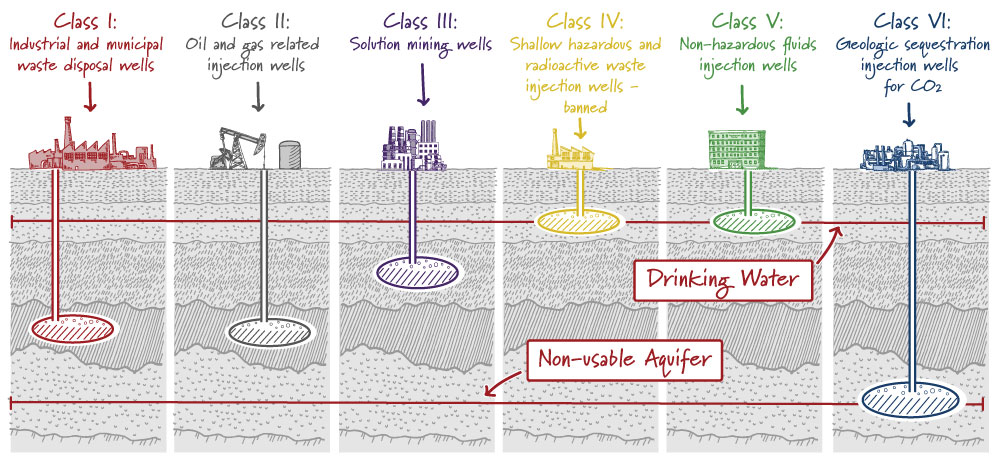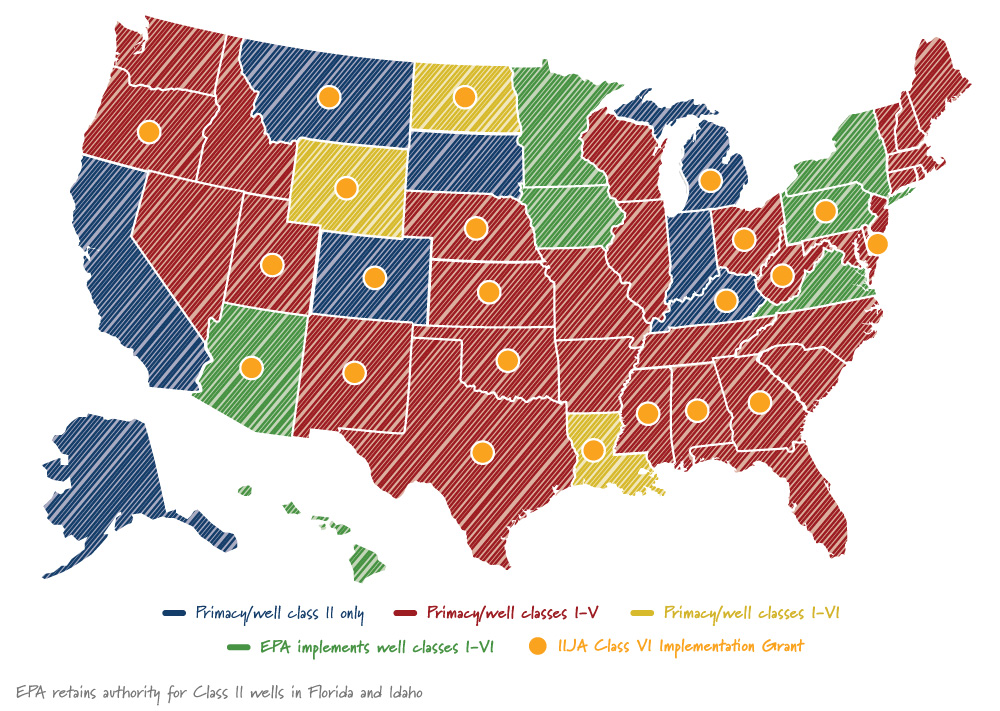Posted on January 18, 2024 by Matthew Mailloux and Savita Bowman
Carbon storage is carrying momentum into 2024 following big year-end developments, with Louisiana obtaining regulatory primacy for carbon storage and Wyoming permitting its first set of Class VI wells. After years of delays and bottlenecks at the federal level, states are taking the lead to move these projects forward.
Both of these developments help address the main challenge developers are currently facing: unclear project development timelines due to permitting delays. To date, the Environmental Protection Agency (EPA) has permitted just two active wells in Illinois and six pending wells in Indiana and California.
The EPA is charged with implementing the Underground Injection Control (UIC) program as required by the Safe Drinking Water Act (SDWA) to prevent contamination of underground sources of drinking water. In 2011, the EPA created a new well classification, known as Class VI wells, specifically for the geological sequestration of carbon dioxide. This well class was specifically created to store CO2 in “non-usable” aquifers under a layer called caprock, which is a natural seal that prevents CO2 from escaping back out into the atmosphere. Research has shown that CO2 can be securely sequestered underground, particularly within deep and porous rock formations, lasting for thousands of years, and there are natural pockets of CO2 that have existed for millions.

States have recognized the need to accelerate these types of investments and have elected to pursue primacy – the ability to process applications through the state’s environmental regulator rather than the federal Environmental Protection Agency (EPA) — for carbon storage wells.
States have long been critical partners in the UIC program. In each case, the state regulator must demonstrate standards that are no less stringent than the federal requirements. While the EPA has delegated primacy for at least one well class to a majority of states, so far, just three states hold Class VI primacy: North Dakota, Wyoming and Louisiana. The number of states with Class VI primacy is expected to steadily increase as applications from Arizona, West Virginia and Texas are all currently under review. Additionally, the EPA recently made award selections across 25 states and tribes to support state primacy applications as directed by the infrastructure bill.

North Dakota and Wyoming have demonstrated a strong track record of approving permits for carbon sequestration in a timely manner. Whereas the federal EPA process can take years, North Dakota and Wyoming have been able to issue permits in a matter of months, with Wyoming issuing its first three Class VI permits in December 2023 after 10 months of review.
As of January 2024,179 wells across 63 projects are currently under review at the EPA. Creating efficient timelines through state primacy will be critical to approving the deluge of new well permit applications currently sitting under review at the EPA. The long and uncertain timelines at the federal level represent a significant barrier to developing the scale of storage capacity required for future carbon management infrastructure.
Additional recommendations to accelerate carbon storage projects include:
Combined with a growing interest in Class VI primacy applications from states, these policy recommendations will position carbon capture and storage for more breakthroughs in the year ahead. It will be critical for the EPA to demonstrate success by expeditiously reviewing state primacy applications to unlock projects and get more steel (and CO2 emissions) into the ground.
